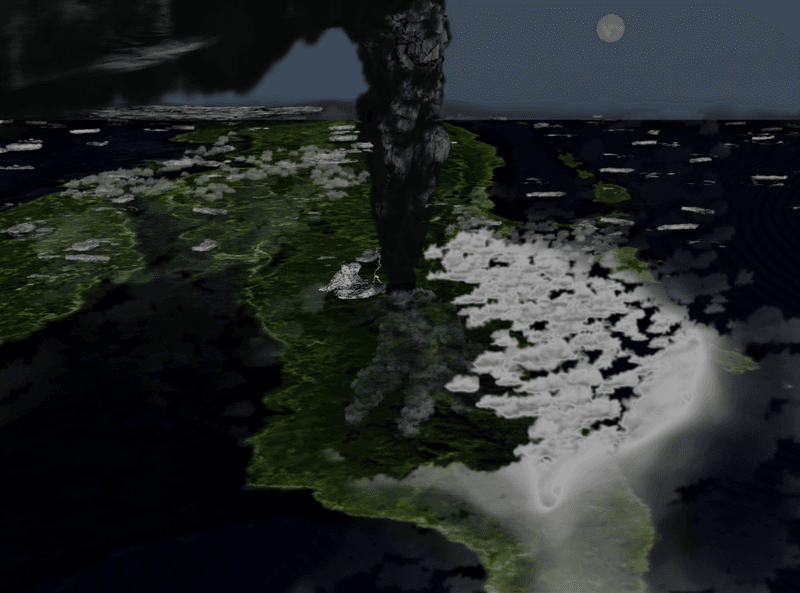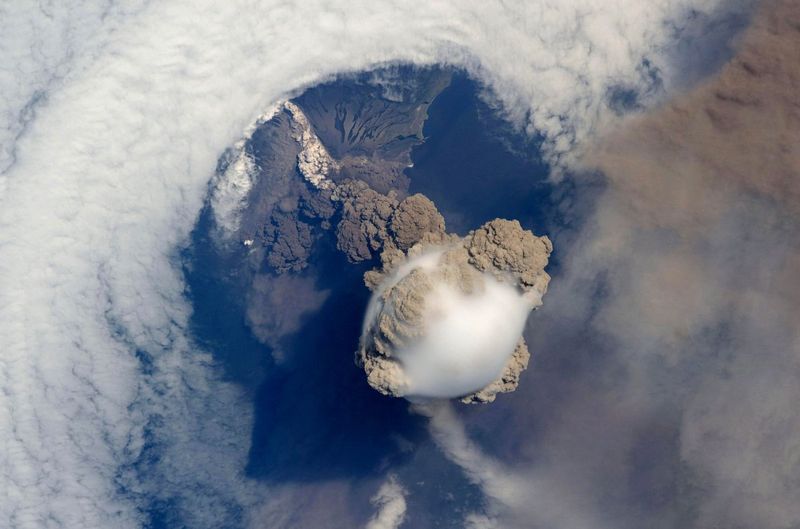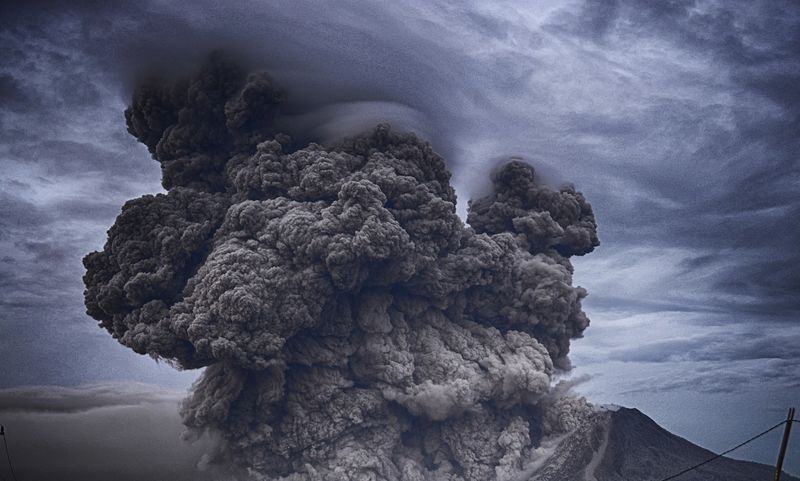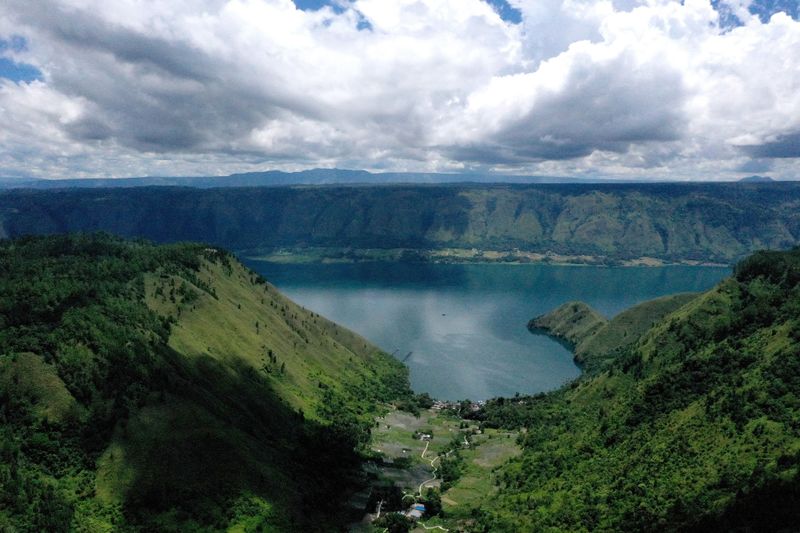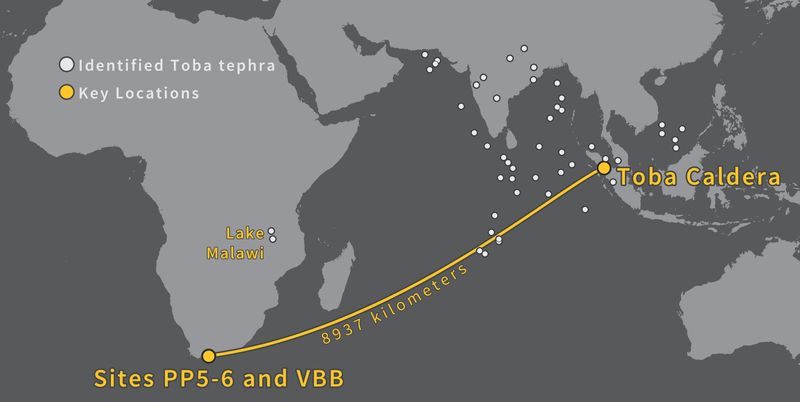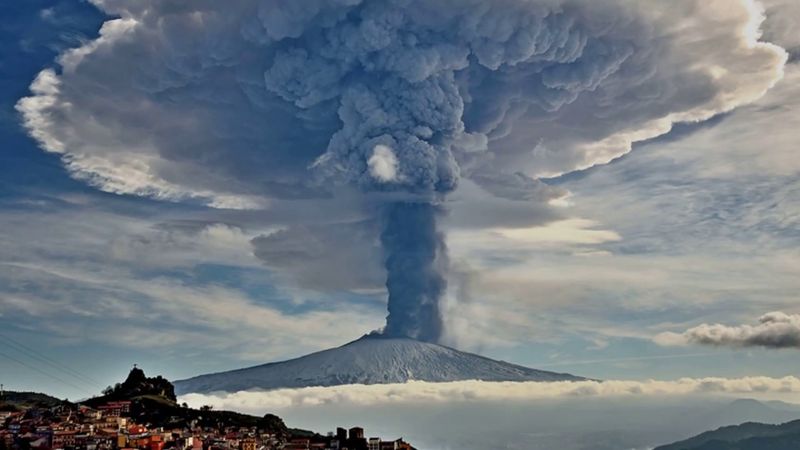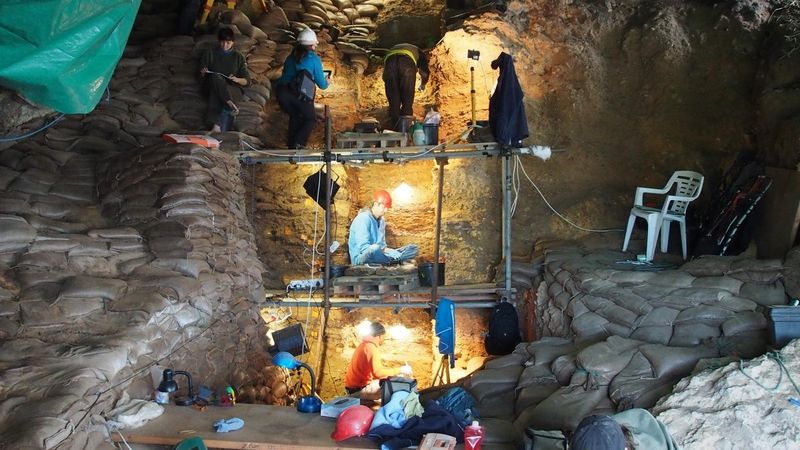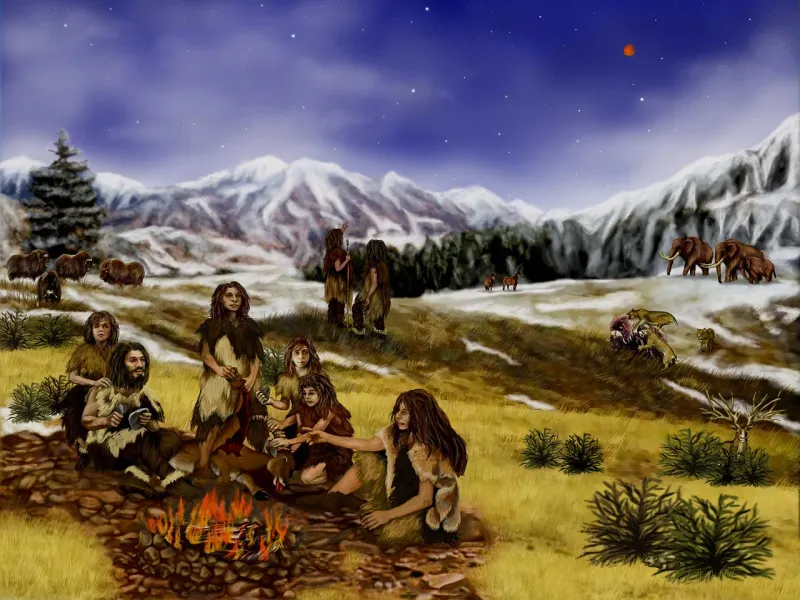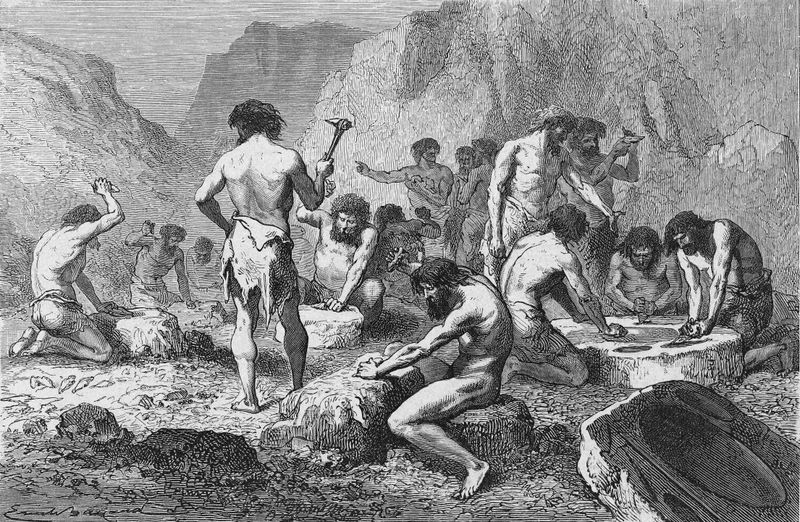Around 74,000 years ago, the Toba supervolcano erupted in what is now Indonesia, triggering one of the most catastrophic events in human history.
Some scientists believe it nearly drove early humans to extinction, reducing our numbers to just a few thousand. Here’s how this disaster unfolded—and how our ancestors managed to survive.
1. A Mega-Explosion Like No Other
The Toba eruption stands as one of the most powerful volcanic events recorded. It ejected approximately 2,800 cubic kilometers of ash and rock—an astounding amount.
This material was enough to blanket a vast area, essentially covering the entire United States in debris. Such an explosion didn’t just alter the physical landscape but also had a profound effect on the climate.
The sheer volume of ash and rock released into the atmosphere marked a turning point for the environment, changing weather patterns and setting the stage for further challenges to survival. It was truly a mega-explosion like no other.
2. A Decade-Long Volcanic Winter
Following the eruption, ash and sulfuric gases filled the atmosphere. This combination effectively blocked sunlight, leading to a global temperature drop of 3-5°C. The cooler climate initiated a decade-long volcanic winter, impacting ecosystems worldwide.
Droughts became common, and crops failed, creating a chain reaction of food scarcity. Plants and animals alike faced extinction, unable to adapt to the sudden cold and lack of resources.
For early humans, this period was a fight for survival, forcing them to find new ways to secure food and warmth amidst a dramatically altered climate.
3. Mass Starvation Threatened Early Humans
The collapse of plant life brought a cascading effect on the entire food chain. With vegetation dying, animals that depended on these resources also faced extinction.
Humans, who relied heavily on hunting and foraging, found themselves in dire straits. As the main sources of sustenance dwindled, starvation became a grim reality for many.
The struggle to find adequate food led to desperation, with early humans needing to adapt quickly or face extinction. Their ingenuity and adaptability would be crucial in overcoming this existential threat, marking a significant chapter in human survival.
4. Ash Covered the Earth
Toba’s eruption sent ash spreading far and wide, reaching continents like Africa, India, and the Middle East. This ash not only darkened the skies but had severe consequences on the land.
Rivers choked with debris, water sources were poisoned, and plant life suffocated under layers of ash. The environment became hostile, presenting severe challenges for survival.
Clean water became scarce, and the air quality deteriorated, making daily life a struggle. In such conditions, early humans had to exhibit resilience and resourcefulness in finding ways to survive in a world blanketed by ash.
5. Oxygen Levels Dropped
The fine ash particles suspended in the air caused significant breathing difficulties. For vulnerable groups like children and the elderly, this posed a serious health risk. Respiratory problems became common, compounding the struggle to survive.
Reduced oxygen levels in certain areas added to the challenge, making even simple tasks arduous. The pervasive ash acted as a constant reminder of the eruption’s reach, influencing daily life.
Survival required not just physical endurance but the ability to adapt to a new, harsher reality. In this struggle, every breath became a testament to human resilience.
6. Human Population Dropped to Just 1,300 People
Genetic evidence suggests a dramatic decline in the human population, possibly reducing numbers to as few as 1,300 individuals. This bottleneck effect meant humanity was clustered into small, isolated groups striving to survive.
These groups became the bedrock for future generations, highlighting the precariousness of human existence at that time. Their survival was a testament to adaptability and perseverance in the face of overwhelming odds.
Despite the near extinction, these small pockets of life would eventually rebuild, laying the foundation for modern human society. Their story is one of survival against all odds.
7. Coastal Living Saved Us
Those living near coastlines found a lifeline in the sea. With land-based food sources scarce, seafood became a crucial component of survival.
Coastal areas provided a relatively stable food supply, allowing these groups to thrive despite the harsh conditions elsewhere. Fishing and gathering seafood offered nutrition and a sense of security amidst uncertainty.
This adaptation to coastal living not only ensured survival but also exemplified human ingenuity in leveraging available resources. These communities proved that survival often depended on the ability to adapt to ever-changing environments.
8. Cave Shelters Provided Protection
In the face of harsh external conditions, early humans sought refuge in caves. These natural shelters offered protection from the elements, providing warmth and safety during the cold volcanic winter.
Caves became central to survival strategies, allowing families and groups to huddle together for support. The safety and security of these shelters enabled a semblance of normalcy, even in a world turned upside down.
The use of caves underscored human adaptability and the instinctual drive to find spaces that offer protection against nature’s fury. Caves were more than shelters; they were sanctuaries of hope.
9. Animals Helped Us Recover
Despite the widespread devastation, some animal species managed to survive. These animals became vital to the recovery of human populations. Hunting and scavenging provided essential resources like food, clothing, and tools.
Early humans utilized every part of the animals they caught, ensuring nothing went to waste. This reliance on animals highlights the interconnectedness of ecosystems and the role of fauna in human survival.
By adapting their hunting strategies and learning from the natural world, humans could slowly rebuild their lives. The symbiotic relationship with these animals was crucial in the path to recovery.
10. Fire and Toolmaking Kept Us Alive
The ability to control fire and create tools marked a turning point in human survival. Fire provided warmth, protection, and a means to cook food, drastically improving living conditions.
Toolmaking allowed for more efficient hunting and gathering, offering a competitive edge in a resource-scarce world. Mastering these skills became a survival imperative, enabling humans to adapt to their new environment.
The ingenuity in fire and tool use underscores human innovation and resilience. These skills not only ensured survival but also laid the groundwork for future advancements, shaping the trajectory of human development.
11. The Human Spirit Endured
In the face of overwhelming adversity, it was the indomitable human spirit that carried our ancestors through. Small groups of survivors exhibited remarkable adaptability, migrating to new areas, and eventually thriving.
Their persistence and ingenuity became the foundation for the resilience embedded in human DNA. Despite the catastrophe, these communities held on, their survival becoming a testament to the human capacity for hope and renewal.
As they adapted and evolved, they set the stage for future generations. The endurance of the human spirit remains a powerful reminder of our potential to overcome.

